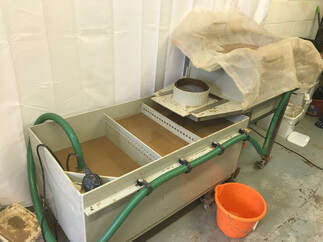|
By Dave Gilbert For over twenty-five years, the UN’s annual World Water Day has been raising awareness of the importance of water. “Water is at the core of sustainable development and is critical for socio-economic development, healthy ecosystems and for human survival itself. It is vital for reducing the global burden of disease and improving the health, welfare, and productivity of populations. It is central to the production and preservation of a host of benefits and services for people. Water is also at the heart of adaptation to climate change, serving as the crucial link between the climate system, human society and the environment.” - The United Nations Department for Social and Economic Affairs  Agriculture currently accounts for 70% of the worlds water demands and it is estimated that by 2050, world agriculture will need to produce 60% more food globally. Industry and energy accounts for 20% of the water demands, with domestic use the final 10%. Analysts have indicated that in order to feed the world’s population the needed water saving must come from industry. The heritage sector is not exempt from these concerns. For Red River Archaeology our single largest use of water comes from processing palaeoenvironmental samples. Traditionally such processing was undertaken using a free flow system that is still very common across the sector. This involves a continual water supply flowing through soils samples to float organic remains through a system of graded sieves, with the water that had passed through lost as waste. There were also associated problems with silt discharge and management. In order to alleviate this waste, the decision was made to trial an enclosed system where water was filtered through silt traps and settling tanks before being recycled with minimum loss. There was no loss of productivity and the initial trial was so successful in saving water that further units were ordered increasing company capacity by 300%. The move to an enclosed water unit has seen an estimated* reduction of 7000% on water use compared to the more traditional free flowing systems. Also, the associated silt traps ensure that there is next to zero silt emission in the wastewater, with certification in place for discharge. We believe this goes to show how relatively small innovations and changes to procedures can have a far-reaching impact. By simply introducing innovative systems the company is able to use water far more efficiently. * based on figures supplied by the local water company.
0 Comments
Your comment will be posted after it is approved.
Leave a Reply. |
Categories
All
|
|
|
|
|
|
|
RED RIVER ARCHAEOLOGY
|
